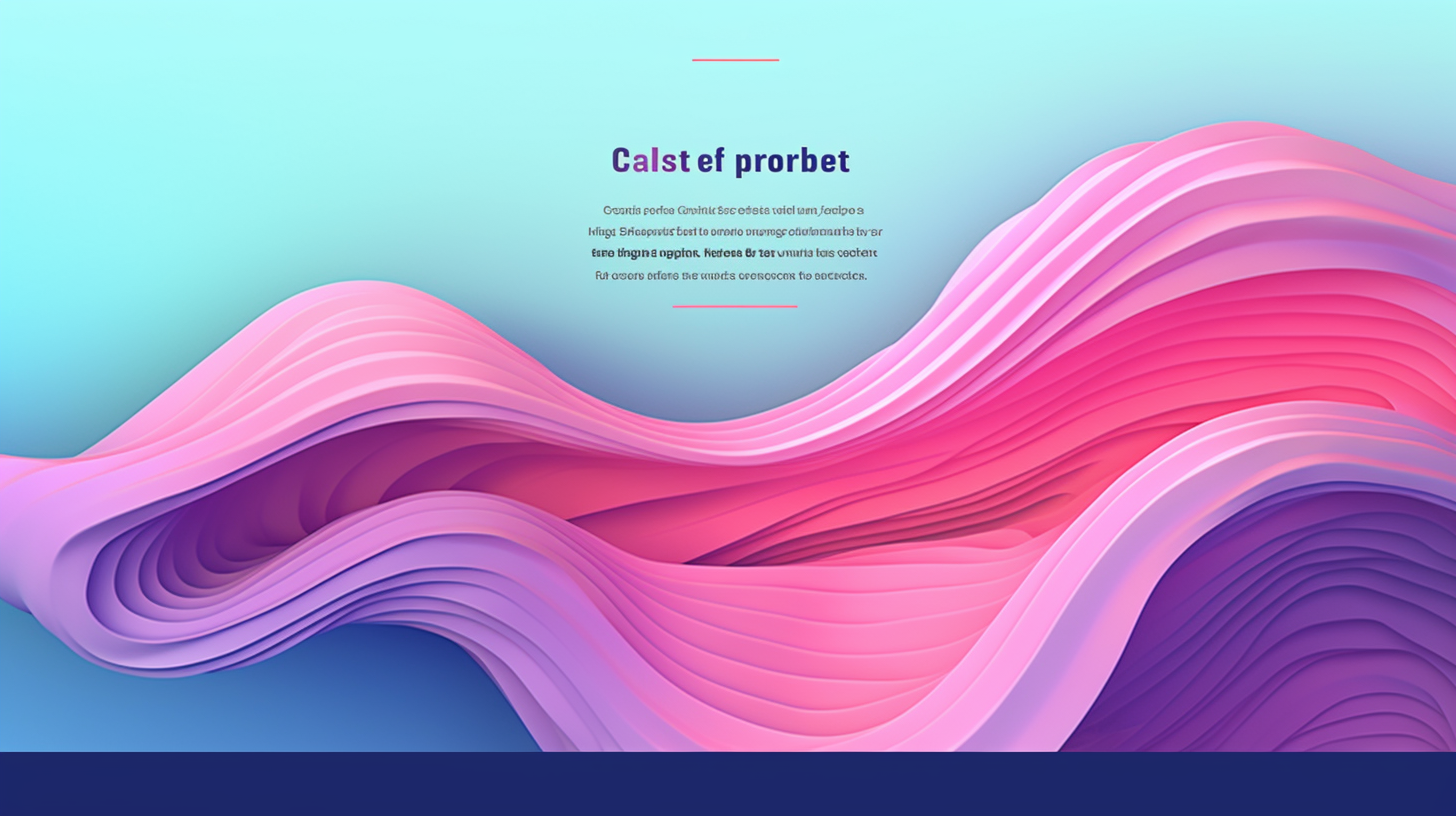歡迎閱讀這篇關於如何透過強大的速度優化技巧徹底改變您的 Divi 網站的文章!在當今的數位世界中,注意力持續時間越來越短,用戶希望獲得即時滿足,網站速度對於任何線上業務的成功都起著至關重要的作用。網站加載緩慢可能會導致沮喪的用戶離開您的網站並將業務轉移到其他地方。但別擔心,因為在本文中,我們將探討各種技術和策略來優化您的 Divi 網站的速度。
您是否曾經造訪過一個需要很長時間載入的網站?這讓你感覺怎樣?很有可能,您會感到沮喪和不耐煩,甚至可能決定完全放棄網站。嗯,您的網站訪客在面對緩慢的載入時間時也會有同樣的感受。
為了創造積極的用戶體驗並保持訪客的參與度,確保您的網站快速有效地加載至關重要。您的網站載入速度越快,訪客停留、與您的內容互動並轉換為客戶的可能性就越大。此外,網站速度是搜尋引擎排名的關鍵因素,因為Google等搜尋引擎優先考慮載入速度快的網站。
在本文中,我們將深入探討速度優化的重要性,為您提供評估網站當前速度的見解,並引導您完成優化 Divi 網站以實現閃電般快速效能的策略。從優化圖片、縮小 CSS 和 JavaScript 檔案到實現快取和使用內容傳送網絡,我們都能為您提供協助。那麼,讓我們深入研究並徹底改變您的 Divi 網站的速度效能!
為什麼速度優化很重要
在當今快節奏的數位世界中,速度就是一切。對於您的網站來說,速度優化對於其整體成功起著至關重要的作用。無論您經營的是個人部落格還是電子商務商店,網站速度都會決定您的線上形象。以下是速度優化如此重要的一些令人信服的理由:
更好的使用者體驗
想像一下,點擊一個網站並等待它加載,感覺就像等待永遠一樣。很令人沮喪,對吧?嗯,您的網站訪客也有同樣的感受。事實上,研究表明,40% 的人會放棄載入時間超過 3 秒的網站。透過優化網站速度,您可以為使用者提供無縫的瀏覽體驗。這有助於保持他們的參與度,鼓勵他們在您的網站上停留更長時間,並增加將他們轉變為忠實客戶的機會。
提高搜尋引擎排名
像 Google 這樣的搜尋引擎會優先考慮提供良好使用者體驗的網站,而頁面載入速度是決定整體使用者體驗的重要因素。谷歌甚至實施了「頁面體驗」更新,將網站速度作為排名因素。透過優化網站速度,您可以提高其在搜尋引擎結果頁面(SERP)上排名更高的機會。更高的排名意味著您的網站擁有更多的自然流量和更高的知名度。
更高的轉換率
您是否知道頁面載入時間延遲一秒鐘就會導致轉換率降低 7%?速度優化不僅可以增強使用者體驗,而且在提高網站轉換率方面也起著關鍵作用。當您的網站載入速度很快時,訪客就更有可能瀏覽您的產品、進行購買、註冊電子報或採取您希望他們採取的任何操作。速度更快的網站可以讓用戶信任並有信心,從而提高轉換率,並最終實現更成功的線上業務。
速度優化不僅僅是一個很好的功能;在當今競爭激烈的數位環境中,它是必要的。透過提高網站速度,您可以顯著增強用戶體驗、提高搜尋引擎排名並增加轉換率。
請記住,在廣闊的網路世界中,穩紮穩打並不能贏得比賽。那麼,讓我們深入研究如何評估和優化您的網站速度,以確保閃電般的線上速度!
評估您網站的當前速度
評估網站速度是優化網站效能的關鍵一步。透過了解您的網站目前的載入速度,您可以確定需要改進的地方並採取有針對性的措施來提高其速度。以下是評估網站目前速度的一些主要方法:
使用線上速度測試工具
有幾種線上工具可以幫助您分析網站的載入速度。這些工具提供有關您網站效能指標的詳細報告和見解。一些流行的速度測試工具包括:
- Google PageSpeed Insights: 此工具可衡量您的網站在桌面和行動裝置上的效能。它提供了改進建議並給出了 100 分的評分。
- Pingdom 網站速度測試: 此工具可分析您網站速度的各個方面,包括頁面大小、載入時間和效能等級。它提供了影響整體速度的每個元素的詳細分類。
- GTmetrix: GTmetrix 對您的網站速度和效能提供全面的分析。它提供了一份詳細的報告,其中包含改進建議,例如優化圖像和縮小檔案。
分析載入時間和效能指標
除了使用速度測試工具外,分析載入時間和效能指標也很重要,這樣才能全面了解網站的速度。需要考慮的一些關鍵績效指標包括:
- 第一個位元組的時間 (TTFB): TTFB 測量伺服器回應使用者瀏覽器的請求開始發送第一個資料位元組所需的時間。較高的 TTFB 會顯著降低您的網站速度。
- 頁面載入時間: 頁面載入時間是指網頁完全載入並顯示所有內容所需的時間。更快的頁面載入時間可帶來更好的使用者體驗和更高的 SEO 排名。
- 渲染開始時間: 渲染開始時間測量瀏覽器開始渲染網頁內容所需的時間。更快的渲染開始時間可確保使用者可以快速開始與頁面互動。
透過分析這些指標,您可以確定網站速度中需要優化的特定領域。了解這些領域將幫助您確定速度優化技術的優先實施。
「評估您網站的當前速度就像測量溫度一樣。它可以幫助您了解網站當前的性能狀況並指導您進行策略改進。
現在您知道如何評估您網站的當前速度,讓我們繼續下一步:優化圖像以加快載入速度。
優化圖片以加快載入速度
圖像對於使您的網站在視覺上吸引訪客並吸引他們參與起著至關重要的作用。然而,過大且未優化的圖片會顯著減慢您網站的載入時間。以下是一些強大的優化技巧,可確保您的圖像快速有效地加載:
選擇正確的影像格式
選擇合適的圖像格式會對您的網站的載入速度產生重大影響。以下是最常見的圖像格式及其使用時機:
- JPEG:非常適合壓縮具有多種顏色的複雜影像。它在圖像品質和檔案大小之間提供了良好的平衡。對有漸層的照片和影像使用 JPEG。
- 巴布亞紐幾內亞:最適合用於具有透明背景、標誌或帶有文字的圖形的圖像。 PNG 影像的檔案大小較大,但品質更高、解析度更清晰。
- 動態圖片:適用於動畫圖像或顏色有限的簡單圖形。 GIF 影像的檔案大小通常較小,但品質較低且色彩有限。
壓縮和調整影像大小
影像壓縮是在不犧牲影像品質的情況下減小檔案大小的有效方法。這有助於確保您的圖像快速加載,同時不影響其視覺吸引力。以下是一些壓縮和調整影像大小的方法:
- 使用影像壓縮工具:TinyPNG、Compressor.io 或 Squoosh 等線上工具可以幫助壓縮您的影像,而不會造成明顯的品質損失。
- 調整影像大小:在將圖像上傳到您的網站之前,請確保將其調整為最佳顯示尺寸。這將減小檔案大小並確保它們快速加載。
延遲載入圖片
延遲載入是一種僅在影像在使用者螢幕上可見時才載入影像的技術,而不是在初始頁面載入時載入影像。這可以顯著提高您的網站的載入速度,尤其是對於包含多張圖片的頁面。考慮使用諸如 WP Rocket 的 Lazy Load 或 Lazy Load XT 等插件實現延遲載入。
請記住,優化圖像以加快載入速度對於提高網站的整體效能至關重要。透過選擇正確的圖像格式、壓縮和調整圖像大小以及實現延遲加載,您可以確保您的網站快速加載並提供無縫的用戶體驗。
「優化圖片以加快載入速度對於提高網站效能至關重要。透過選擇正確的圖像格式、壓縮和調整圖像大小以及實現延遲加載,您可以確保您的網站快速加載並提供無縫的用戶體驗。
縮小 CSS 和 JavaScript 文件
在優化 Divi 網站速度時,您不想忽視的一個方面是 CSS 和 JavaScript 檔案的最小化。縮小這些檔案可以對您網站的載入時間產生重大影響,使其更快、更有效率。但是縮小 CSS 和 JavaScript 檔案到底意味著什麼呢?那你該如何做呢?讓我們深入了解如何利用這些強大的速度優化技巧徹底改變您的 Divi 網站。
什麼是最小化?
縮小是指從檔案中刪除不必要的字元和空格而不影響其功能的過程。對於 CSS 和 JavaScript 文件,這些不必要的字元包括換行符、縮排、註解和空格。透過刪除這些元素,檔案大小會顯著減小,從而縮短載入時間。
為什麼縮小規模很重要?
縮小 CSS 和 JavaScript 檔案可以為您的 Divi 網站帶來多種好處,包括:
- 減小檔案大小:縮小 CSS 和 JavaScript 檔案可有效縮小其檔案大小,這表示您的網站將為使用者更快載入。這可以對使用者體驗產生積極影響,並鼓勵訪客在您的網站上停留更長時間。
- 改善頁面載入時間:更快的頁面載入時間可帶來更好的整體使用者體驗。研究表明,用戶希望網頁在三秒或更短的時間內載入。透過最小化文件,您可以幫助滿足這一期望,並防止潛在訪客因載入時間緩慢而放棄您的網站。
如何壓縮 CSS 和 JavaScript 文件
若要縮小 Divi 網站的 CSS 和 JavaScript 文件,請依照以下步驟操作:
- 刪除不必要的程式碼:檢查您的 CSS 和 JavaScript 檔案並刪除任何不必要的程式碼,例如註解、多餘的空格以及未使用的樣式規則或函數。僅此一步就可以顯著減少檔案大小。
- 合併和縮小檔案:將多個 CSS 或 JavaScript 檔案合併為一個檔案。這減少了 HTTP 請求的數量並優化了載入過程。有多種工具和外掛程式可用於自動縮小和合併文件,例如 自動最佳化 和 WP火箭。這些工具可以輕鬆整合到您的 Divi 網站中。
- 更新引用:縮小檔案後,請確保更新 HTML 程式碼中對文件的所有引用。這可確保您的網站在使用最小化檔案後能夠繼續正常運作。
透過遵循這些步驟,您可以有效地縮小CSS和JavaScript檔案並提高Divi網站的速度和效能。
結論
縮小 CSS 和 JavaScript 檔案是優化 Divi 網站速度的重要步驟。透過減少檔案大小並改善頁面載入時間,您可以增強使用者體驗,提升搜尋引擎排名並提高轉換率。因此,花點時間縮小您的 CSS 和 JavaScript 文件,看看它在徹底改變您的 Divi 網站的速度和效能方面能帶來什麼變化。
快取和內容分發網絡
快取和內容分發網路 (CDN) 是強大的工具,可顯著提高 Divi 網站的速度和效能。透過實施快取技術並利用 CDN,您可以減少載入時間、改善使用者體驗並提高您網站的搜尋引擎排名。在本節中,我們將探討快取和 CDN 的工作原理以及如何利用它們來實現最佳網站效能。
實現瀏覽器和伺服器緩存
快取允許您的網站儲存和提供先前產生的 HTML 頁面、CSS 檔案、JavaScript 檔案和圖像。每次使用者造訪您的網站時,您無需從頭產生和檢索這些資源,而是提供快取版本,從而顯著縮短載入時間。
以下是在 Divi 網站中實現快取的一些技巧:
- 瀏覽器快取:透過為伺服器的回應新增適當的 HTTP 標頭來啟用瀏覽器快取。這會指示使用者的瀏覽器將某些資源儲存在本機,從而減少重複下載的需求。
- 伺服器快取:利用伺服器端快取解決方案(例如 Redis 或 Memcached)來儲存預先渲染的 HTML 頁面或資料庫查詢。這使得您的伺服器可以向用戶提供快取內容,從而減少伺服器的負載並縮短回應時間。
使用內容傳遞網路 (CDN)
CDN 是位於世界各地的伺服器網絡,它從最靠近用戶所在地的伺服器快取並提供您網站的靜態內容,例如圖像、CSS 檔案和 JavaScript 檔案。這有助於減少延遲並縮短載入時間,特別是對於遠離您的 Web 伺服器的使用者。
以下是如何利用 CDN 來造訪你的 Divi 網站的方法:
- 選擇可靠的CDN:有幾種流行的 CDN 供應商可用,例如 Cloudflare、Fastly 和 Amazon CloudFront。考慮價格、伺服器位置和附加功能等因素,以選擇最適合您需求的 CDN。
- 將 CDN 與 Divi 集成:選擇 CDN 後,您需要對其進行配置以與 Divi 配合使用。這通常涉及在您的網站設定中添加 CDN URL 或網域。 Divi 提供了為您的 CSS 和 JavaScript 檔案輸入 CDN URL 的選項,從而允許從 CDN 伺服器提供它們。
- 優化 CDN 設定:利用您的 CDN 供應商提供的功能進一步優化您網站的效能。這可能包括啟用 GZIP 壓縮、縮小和 HTTP/2 協定支援。
透過實施快取並利用 CDN 的強大功能,您可以顯著提高 Divi 網站的速度和效能。用戶將體驗到更快的頁面載入時間,從而獲得更流暢的瀏覽體驗。此外,Google等搜尋引擎將網站速度視為排名因素,因此優化網站速度也可以提高搜尋引擎排名。
提示:請記住,當您更新網站時,快取和 CDN 可能需要定期更新和設定變更。定期監控您網站的效能並根據需要進行調整以確保最佳速度和功能。
現在我們已經介紹了快取和 CDN,讓我們進入下一部分,探討如何優化網站的資料庫並清理不必要的插件,以進一步提高 Divi 網站的速度和效能。
優化資料庫和清理插件
在優化 Divi 網站速度時,經常被忽視的一個領域是資料庫和外掛程式。許多網站所有者忘記定期清理資料庫和刪除不必要的插件會對其網站的效能產生重大影響。在本節中,我們將深入探討優化資料庫和清理外掛程式為何至關重要,並為您提供一些實用的入門技巧。
為什麼優化資料庫和清理插件很重要
臃腫的資料庫和不必要的插件會降低您的網站速度,導致糟糕的用戶體驗和較低的搜尋引擎排名。這就是為什麼優化資料庫和清理插件應該成為優先事項的原因:
- 縮短載入時間: 優化的資料庫和精益的插件設定可以顯著改善您的網站的載入時間,確保您的訪客不會感到沮喪和離開。
- 減少伺服器負載: 臃腫的資料庫和過多的插件會對伺服器資源造成不必要的壓力,導致頁面載入時間變慢。
- 增強安全性: 過時和未使用的外掛程式可能會帶來安全風險,使您的網站容易受到網路威脅。透過清理插件,您可以最大限度地減少潛在的攻擊媒介。
刪除未使用的外掛和主題
優化資料庫的第一步是刪除所有未使用的外掛程式和主題。您可以按照以下方式進行操作:
- 盤點: 首先對您網站上安裝的所有外掛程式和主題進行盤點。確定哪些對於您的網站功能至關重要,然後刪除其餘的。
- 更新或刪除: 將您的活動外掛和主題更新到最新版本。刪除不再使用的。在進行任何更改之前,請確保備份您的網站。
- 選擇輕量級替代方案: 如果您發現某些外掛程式佔用大量資源並減慢了您的網站速度,請考慮用具有相同用途的輕量級替代品來替換它們。
最佳化資料庫查詢
優化資料庫查詢可以進一步提高網站的速度和效能。以下是一些優化技巧:
- 使用資料庫優化外掛程式: 有幾個插件,例如 WP-Optimize 和 WP Rocket,可以幫助您清理和優化資料庫表。
- 刪除垃圾郵件和修訂內容: 垃圾評論、貼文修訂和其他不必要的數據會使您的資料庫變得混亂。定期清理它們以保持資料庫精簡和高效。
- 優化資料庫表: 使用插件或 phpMyAdmin 之類的工具來優化您的資料庫表。此過程會重新組織表中的數據,使檢索更有效率。
請記住在對資料庫進行任何更改之前進行定期備份,因為可能會發生意外,並且擁有備份可確保您在出現任何問題時可以還原您的網站。
優化資料庫和清理不必要的插件是一個持續的過程。定期重新評估您網站的插件需求和資料庫效能,以確保您的網站順利運作。
在下一部分中,我們將討論為您的 Divi 網站選擇可靠的網站寄存服務提供者的重要性。
選擇可靠的虛擬主機提供商
在優化您的 Divi 網站速度時,經常被忽視的關鍵因素是選擇可靠的網站寄存服務提供者。您的網站主機在決定您的網站載入和運行速度方面起著重要作用。這就是為什麼選擇正確的託管服務提供者至關重要,以及在做出選擇時需要考慮哪些因素。
考慮伺服器速度和資源
您的網站的速度和效能在很大程度上取決於您的主機服務提供者提供的伺服器速度和資源。以下是一些需要考慮的因素:
- 伺服器回應時間: 伺服器回應時間緩慢會嚴重影響您網站的載入速度。尋找提供快速伺服器回應時間(通常低於 200 毫秒)的主機服務供應商。
- 伺服器位置: 託管伺服器的地理位置會影響不同地區使用者的網站載入速度。考慮選擇伺服器靠近目標受眾的提供者。
- 硬體資源: 了解託管服務提供者提供哪些硬體資源。尋找提供固態硬碟 (SSD) 而不是傳統硬碟的供應商,因為 SSD 更快、更可靠。
- 可擴充性: 隨著您的網站不斷發展並吸引更多的流量,您將需要一個可以滿足您需求的託管服務提供者。尋找提供可擴展託管計劃的供應商,以便您在必要時輕鬆升級資源。
可擴展性和正常運作時間保證
選擇網站寄存服務提供者時要考慮的另一個重要因素是可擴充性和正常運作時間保證。這就是為什麼它如此重要:
- 可擴充性: 您的託管服務提供者應該提供允許您隨著網站需求的增加而擴展資源的計劃。這種靈活性可確保您的網站即使在流量高峰期也能繼續表現良好。
- 正常運轉時間保證: 網站停機可能會導致糟糕的用戶體驗並對您的 SEO 排名產生負面影響。尋找提供高正常運作時間保證的託管服務供應商,通常為 99.9% 或更高。
- 客戶支援: 如果您遇到任何問題,從託管服務提供者獲得響應迅速且知識淵博的客戶支援至關重要。尋找透過即時聊天、電話或電子郵件等多種管道提供全天候支援的供應商。
- 評論和聲譽: 在做出決定之前,請花時間研究並閱讀有關不同託管服務提供者的評論。專注於伺服器速度、正常運作時間和客戶支援的使用者回饋,以做出明智的選擇。
透過考慮這些因素,您可以選擇一個可靠的網站寄存服務供應商,為您的 Divi 網站提供必要的速度和效能。請記住,正確的託管服務提供者是對您網站成功的投資,並將有助於優化使用者體驗。
「選擇可靠的網站寄存服務供應商對於您網站的速度和效能至關重要。尋找具有快速伺服器回應時間、可擴展託管計劃和高正常運行時間保證的提供者。在做出決定之前,別忘了查看顧客評論和聲譽。
監控和持續優化
監控和持續優化是維護高效能網站的重要方面。即使實施了速度優化技術,定期監控網站的效能並持續改進仍然至關重要。本節將探討監控的重要性並提供有關如何持續優化您的網站的提示。
定期監控網站效能
定期監控可讓您識別並解決可能影響網站速度和效能的任何問題。以下是您應該監控的網站效能的一些關鍵方面:
- 頁面載入時間: 追蹤您的網站頁面的載入速度。頁面載入緩慢會讓訪客望而卻步,並對您的搜尋引擎排名產生負面影響。
- 伺服器回應時間: 測量您的伺服器回應請求需要多長時間。伺服器回應時間緩慢可能會導致您的網站載入延遲。
- 跳出率: 分析未採取任何行動就離開您網站的訪客百分比。高跳出率可能表示頁面載入時間緩慢導致使用者體驗不佳。
- 轉換率: 監控您網站上的轉換率。頁面載入緩慢會導致轉換率降低,因為訪客可能會失去興趣或耐心並放棄購買或表單提交。
您可以利用各種工具和服務來追蹤這些效能指標。例如,Google Analytics 提供了有關使用者行為和網站效能的寶貴見解。
分析使用者行為並做出改進
除了監控效能指標之外,分析使用者行為並持續改進您的網站也至關重要。透過了解使用者如何與您的網站互動,您可以確定需要優化的領域。以下是一些分析使用者行為並進行改進的策略:
- 熱圖: 熱圖工具以直覺的方式呈現您網站上的用戶交互,顯示網頁中哪些區域最受關注。這些資訊可以幫助您優化佈局和設計,確保使用者更容易存取重要元素。
- 用戶流分析: 使用者流程分析可讓您追蹤訪客在您的網站上所採取的路徑,從入口點到出口點。透過識別用戶離開的頁面,您可以優化這些頁面以提高轉換率和用戶體驗。
- A/B 測試: A/B 測試包括創建網頁的兩個版本並比較它們的效能。透過測試標題、圖片或行動號召等不同元素,您可以確定哪個版本能帶來更好的效果。透過這種迭代方法,您可以不斷優化您的網站以獲得最大的影響力。
- 回饋和調查: 透過調查或回饋表收集網站訪客的回饋可以為他們的體驗提供有價值的見解。利用此回饋來解決痛點並做出必要的改進。
重要的是要記住優化是一個持續的過程。持續監控您的網站的效能並分析使用者行為將幫助您確定需要改進的領域並確保您的網站保持快速且使用者友好。
「監控和持續優化對於確保您的網站保持快速並提供無縫的使用者體驗至關重要。透過定期監控效能指標和分析使用者行為,您可以做出明智的改進,從而實現更好的轉換並讓訪客感到滿意。
結論
總之,優化 Divi 網站的速度對於提供更好的用戶體驗、提高搜尋引擎排名和提高轉換率至關重要。透過遵循本文概述的提示和策略,您可以徹底改變網站的效能並將其提升到新的水平。
請記住,速度優化是一個持續的過程。定期監控您網站的效能並分析使用者行為以確定需要改進的領域。透過不斷優化您的網站,您可以確保它保持快速和高效,並讓您的訪客保持參與和滿意度。
投入時間和精力進行速度優化是值得的。它不僅會使您的用戶受益,而且還會提高您的搜尋引擎排名,從而增加自然流量並提高轉換率。在當今的數位環境中,快速載入的網站對於保持競爭優勢至關重要。
因此,請充分利用此處討論的強大的速度優化技巧,例如優化圖像、縮小 CSS 和 JavaScript 文件、實施快取和 CDN、優化資料庫以及選擇可靠的網站託管服務提供者。
透過實施這些策略,您可以提供無縫且愉快的用戶體驗,最終將吸引更多訪客,提高搜尋引擎可見性和提高轉換率。
請記住,討論的具體步驟和方法可能會根據您網站的特定需求和要求而有所不同。請隨時尋求專業協助或諮詢 Divi 社群以獲取更多指導。
現在是時候將這些速度優化技巧付諸實踐並徹底改變您的 Divi 網站了。首先評估您網站的當前速度,然後實施必要的優化。請記住,每一個小小的進步都很重要!
繼續前進,讓您的 Divi 網站達到速度和效能的新高度。您的網站訪客將會感謝您,並且您將獲得流量增加、轉換率提高和整體成功的回報。保持競爭優勢並透過閃電般的性能讓您的 Divi 網站脫穎而出。
請記住,對速度的需求不僅是一種趨勢,而且是當今數位時代的必需品。所以,優化,優化,優化!
常見問題解答
- 有哪些針對 Divi 網站的有效速度優化技巧?
Divi 網站的一些強大的速度優化技巧包括:1. 盡量減少插件和腳本的使用,2. 使用快取插件,3. 壓縮和優化圖像,4. 啟用 GZIP 壓縮,以及 5. 最小化 CSS 和 JavaScript 檔案。
- 為什麼網站速度優化對 Divi 網站很重要?
網站速度優化對於 Divi 網站非常重要,因為它可以改善用戶體驗、降低跳出率、提高轉換率,並幫助您的網站在搜尋引擎結果頁面 (SERP) 上獲得更好的排名。
- 如何才能最大限度地減少 Divi 網站插件和腳本的使用?
為了盡量減少 Divi 網站插件和腳本的使用,請僅安裝必要的插件,刪除未使用或過時的插件,並將多個腳本合併為一個檔案以減少 HTTP 請求的數量。
- 推薦使用哪種 Divi 網站快取外掛?
Divi 網站強烈推薦的快取外掛之一是 WP Rocket。它以其簡單性、強大的快取功能以及與 Divi 的兼容性而聞名。其他選項包括 W3 Total Cache 和 WP Super Cache。
- 如何優化我的 Divi 網站上的圖像以提高速度?
您可以透過將 Divi 網站上的圖片調整為適當的尺寸來優化它們,使用 Optimizilla 或 TinyPNG 等工具在不損失品質的情況下壓縮它們,以及延遲載入圖片以減少初始載入時間。
{
“@context”:“https://schema.org”,
“@type”:“常見問題頁面”,
「主要實體」:[
{
“@type”:“問題”,
“name”:“Divi 網站有哪些強大的速度優化技巧?”,
「接受答案」:{
“@type”:“回答”,
“text”:“Divi 網站的一些強大的速度優化技巧包括:1. 盡量減少插件和腳本的使用,2. 使用緩存插件,3. 壓縮和優化圖像,4. 啟用 GZIP 壓縮,以及 5. 最小化 CSS 和 JavaScript 文件。”
}
},
{
“@type”:“問題”,
“name”:“為什麼網站速度優化對 Divi 網站很重要?”,
「接受答案」:{
“@type”:“回答”,
“text”:“網站速度優化對於 Divi 網站非常重要,因為它可以改善用戶體驗、降低跳出率、提高轉換率,並幫助您的網站在搜尋引擎結果頁面 (SERP) 上獲得更好的排名。”
}
},
{
“@type”:“問題”,
“name”:“如何才能最大限度地減少我的 Divi 網站插件和腳本的使用?”,
「接受答案」:{
“@type”:“回答”,
“text”:“為了盡量減少 Divi 網站插件和腳本的使用,請僅安裝必要的插件,刪除未使用或過時的插件,並將多個腳本合併為一個文件以減少 HTTP 請求的數量。”
}
},
{
“@type”:“問題”,
“name”:“建議使用哪個 Divi 網站快取外掛?”,
「接受答案」:{
“@type”:“回答”,
“text”:“Divi 網站強烈推薦的快取外掛之一是 WP Rocket。它以其簡單性、強大的快取功能以及與 Divi 的兼容性而聞名。其他選項包括 W3 Total Cache 和 WP Super Cache。
}
},
{
“@type”:“問題”,
“name”:“如何優化我的 Divi 網站上的圖片以提高速度?”,
「接受答案」:{
“@type”:“回答”,
“text”:“您可以通過將 Divi 網站上的圖像調整為適當的尺寸來優化它們,使用 Optimizilla 或 TinyPNG 等工具對其進行壓縮而不會損失質量,以及延遲加載圖像以減少初始加載時間。”
}
}
]}



















